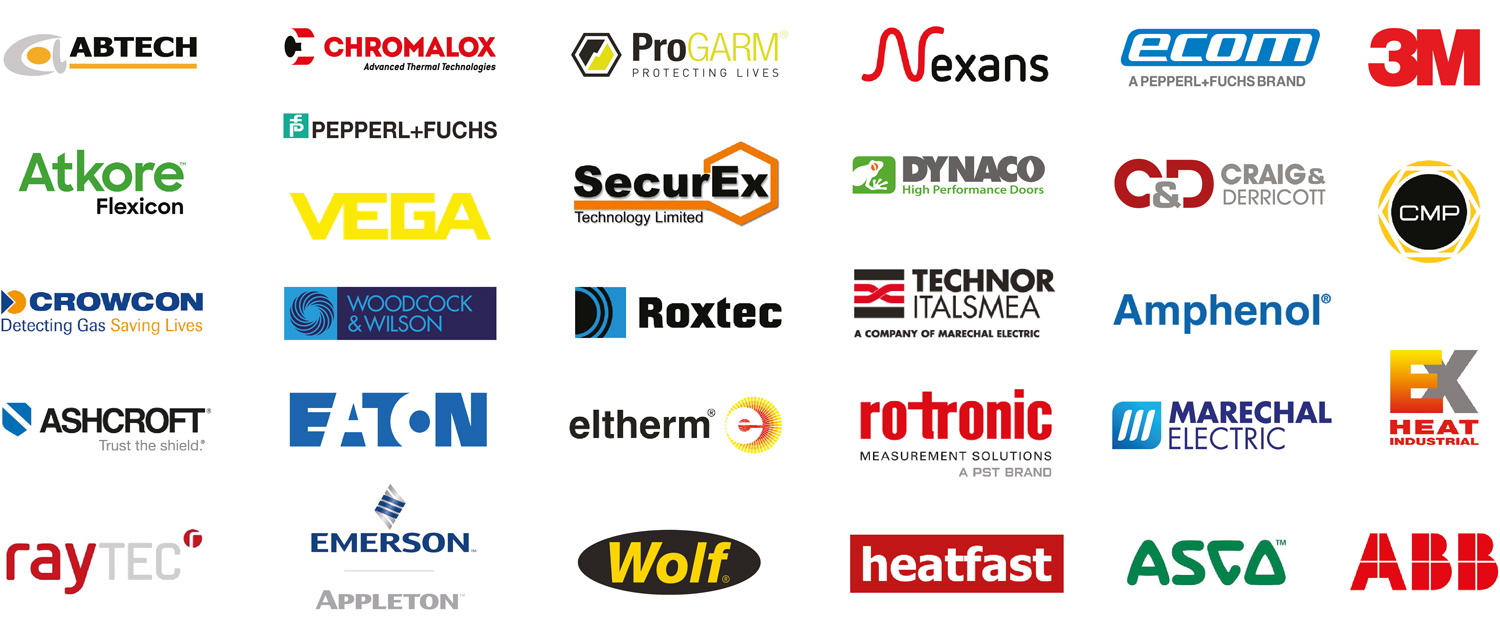Static Electricity: The Shocking Truth! The Risk of Electrostatic Phenomena in Explosive (ATEX-) Environments: A Recap of the Q&A Session
Published 03 Apr 2025
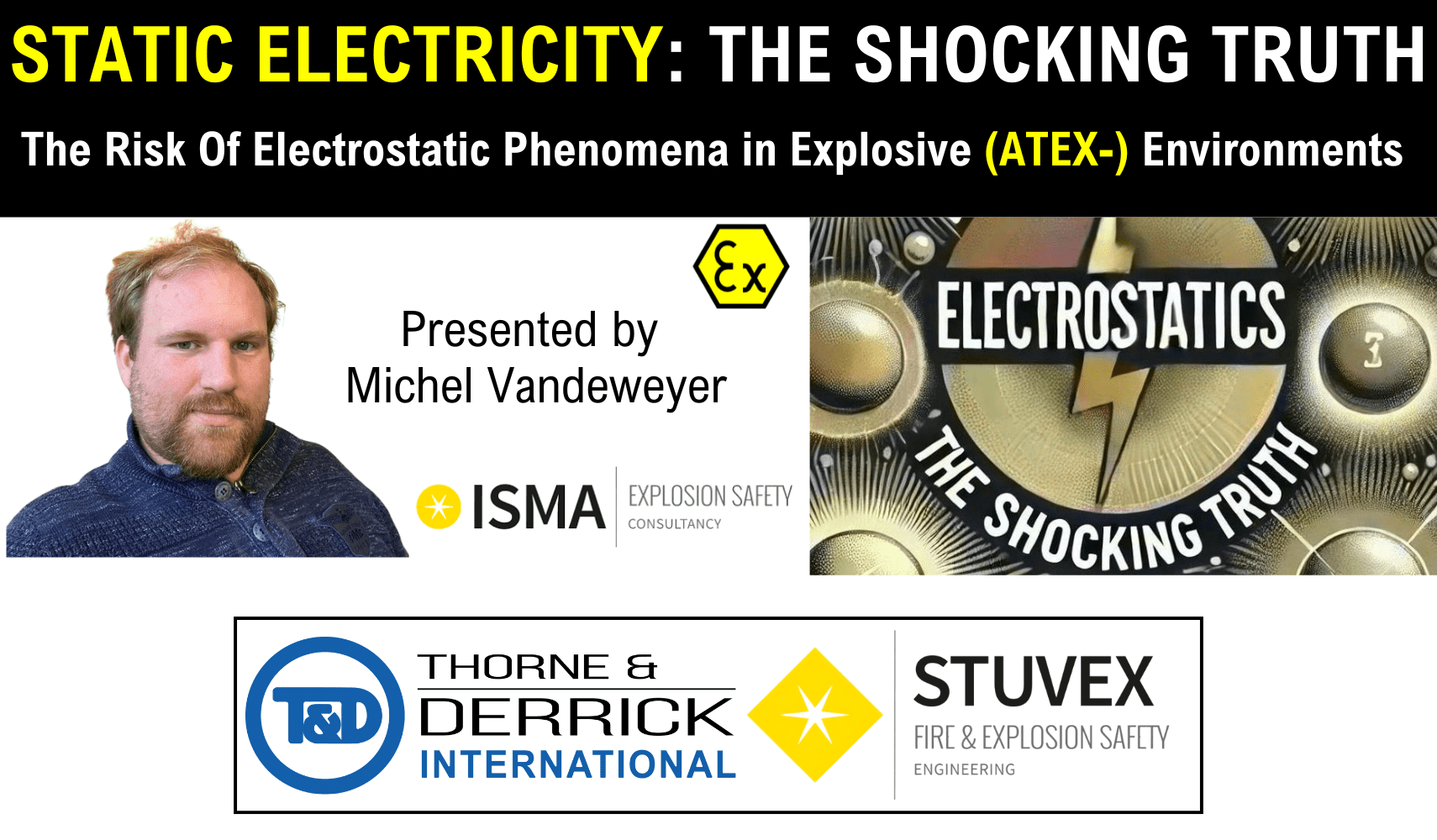
Thorne & Derrick | Exclusive UK Channel Partner for Static Earthing, Grounding & Bonding Systems | Compliant Solutions
Static Control for Explosion Protection of Assets & Operators in Hazardous Area Locations
Static Electricity: The Shocking Truth!
⚠️ Static electricity, though often invisible and underestimated, can ignite flammable substances, leading to potentially catastrophic consequences.⚠️
Thorne & Derrick’s commitment to enhancing safety awareness within the explosive atmosphere industry took centre stage during the recent webinar, Static Electricity: The Shocking Truth! The Risk of Electrostatic Phenomena in Explosive (ATEX-) Environments.
We continue in our crusade to promote safety and proper precautions to mitigate the risk of electrostatic discharges (ESD) that can ignite flammable substances in explosive environments.
In this session together with StuvEx, Michel from ISMA, an expert in the field provided valuable insights on the dangers posed by static electricity in ATEX (Explosive Atmospheres) environments. With over 15 years working in the industry and 5 years specialising in the risks posed by static electricity, Michel is uniquely positioned to provide insights and practical advice that can help you mitigate these dangers.
Following the webinar presentation, attendees had the opportunity to engage with the Michel through a lively Q&A session. Below are some of the key questions and answers discussed.

ISMA | Explosion Safety Consultancy
ISMA specialises in explosion safety, mainly of gas and dust, and static electricity and are the consultancy arm of StuvEx who designs, implements and engineers industrial fire and explosion protection systems.
Q1 – Could you share more about the 13 ignition sources indicate in EN 1127-1 standard?
This would require an additional course of several hours. The EN1127-1:2019 however does already give a lot of guidance.
Q2 – When handling flammable liquids, despite plastic IBCs with a metal cage being UN ‘approved’ for this application, would your findings suggest that the best practice would be to use fully metal stainless steel IBCs to mitigate the risks?
Full metal IBC’s are generally better, but certainly need to be earthed! The grid of the plastic IBC also requires earthing but it is less critical. Especially when handling conductive liquids, metal IBC’s are interesting as these automatically earth the liquid. In plastic IBC’s you need to additionally make sure the liquid is earthed. Metal IBC’s are not always able to be used due to the nature of the products.
Q3 – Equipment grounding requirement is 10 Ohms?
For mechanical equipment, piping, silos, etc. grounding requirements are 1 Mohm. Unless local regulation put additional limits. For electrical equipment, the most strict grounding requirements are not ATEX related, and generally 10Ohm is requested.
Q4 – Are there max values for continuity of bonding connections for Equipotential Bonding of Extraneous Conductive Parts i.e. Bonding of Non-electrical Equipment? e.g. static reels are max 10 ohms but what about fixed bonding? –
In general, a maximum resistance of 1 MOhm is still considered an equipotential connection. However, such a high value is not a safe limit when verifying metal-metal connections. It should be much lower.
Q5 – What is the maximum recommended earth resistance to aim for in ATEX zones?
For equipment, this would be 1 MOhm. For flooring, that would be 10^8 ohm since the measuring method is different. (table 1 of the IEC/TS 60079-32-1:2013+C1:2017)
Q6 – We use flexible pipe and we add to theme earthing and bonding, and I would like ask can we use that
I think you mean that flexible piping is applied, and you put some earthing around it. This is not a good method as those flexible is likely not antistatic. Putting the earthing around it will make things more dangerous. Better to leave it out. Whether you can use the flexible pipe depends on the application. When in a hazardous gas zone (inside or outside): not allowed. When in a hazardous dust zone, it is less strict.
Q7 – Extracting the gas vapours when filling a Big Bac is an obligation. This prevents explosive gases. Why is this not explained.
This is a very specific case. In most cases, when filling big bags, there is no risk of dangerous gas vapours. So for those cases, extraction is not required. I fully agree that gas vapours should be evacuated as much as possible if these are present, and generally required by e.g. environmental law or wellbeing of workers law. In practice, a LOT of companies don’t do this. The reason why this was not covered in the webinar, is that gas extraction is related to zoning and the formation of explosive atmospheres. The topic of this webinar was about the risks of electrostatic discharges The same reason why inerting was also not explained.
Q8 – When using ATEX products the ATEX Directive 2014/34/EU allows manufacturers to self-certify non-electrical Ex equipment for Category 2 and 3 applications without independent verification. This means that a manufacturer can assess its own products and declare conformity without third-party evaluation. Should you consider dual certified equipment to ATEX & IECEx as the best option, as IECEx requires Third-party Testing & Public online database to stop fake certification?
Theoretically, that is the best option, as you are certain a third party was involved in the process of approval.
Q9 – Can you expand on flooring in ATEX areas i.e. test required and allowed ohm range i.e conductive , dissipative and insulative?
The maximum earth resistance of flooring is given to be 10^8 ohm. This value is found in table 1 of the IEC/TS 60079-32-1:2013+A1:2017 and requires the use of a specific test probe.
Q10 – Would a stairwell entering a bunded ATEX need to be independently bonded if not connected mechanically to the structural steel?
Yes. I would recommend to verify the good earthing with a multimeter. There could be national legislations that require every conductive mass to have a separate bonding/earthing.
Q11 – What modification do you recommend for kerosene flowing slowly through settling tanks (60L rectangular tanks)? 12 minutes residence time
See § 7.3.2.2.2 of the IEC 60079-32-1:2013+A1:2017 –> In addition to this, make sure to stay below the flash point. (for kerosene, it is about 37°C. No explosive atmosphere is formed when you are below the flash. Best to take some safety margin
Q12 – What is really the difference in antistatic hose and conductive hose?
An antistatic hose uses plastic material that is somewhat conductive (i.e. the charge is not able to build of so high that dangerous propagating brush discharges may form. A conductive hose is made from conductive material, not plastic.
Q13 – Earthing and bonding, dissipative floorings, .. are used to dissipate charges. Are there rules how often they need to be inspected?
Not that I know of. Also depends strongly on the way the material was made antistatic. E.g. for shoes you should never exceed the maximum age as given by the manufacturer. For flooring I would suggest to ask your supplier of the flooring material. For bonding connections, you can use guidance from ATEX equipment inspections, which is typically done every year.
Q14 – Is the spark discharge occurring inside the pipe in the video or also outside the pipe?
I’m not exactly sure which video you are talking about, but a spark discharge will always happen between two conductive objects at a different potential. So most likely outside piping, between two different conductors.
Q15 – Should all earthing be clean? Should all earths go back to the main earth terminal at source?
First: yes, since it might influence the working of the earthing clamp. Second: generally no. the idea is that conductive objects near each other are connected to the same earth. However requirements on electrical installations is national legislation, and I don’t know them for all different EU member states (and UK )
Q16 – What are the methods to control the static electricity in hydrocarbon gases?
As answered, pure gases rarely pose any charging. In practice, it is hard to really have pure gas without any droplets or dust particles. Therefore, the main protection philosophy is to be above the upper explosion limit of the gas, or avoid the presence of oxygen.
Q17 – Would you consider an earth protection system to be a ‘safety system’? i.e, should it be assigned a SIL/PL? Sorry – earth monitoring system
I need to correct my previous answer. It is not a safety system in the scope of ATEX114, it is an electrical apparatus and therefore must be certified ATEX. Regarding SIL: this is not applicable since it is not a protection system in the scope of ATEX114. The required SIL/PL level should be determined based on a risk evaluation (part of ATEX153 explosion protection document or DSEAR study).
Q18 – Do you only consider the type of dust in the bag when specifying the FIBC, or do you consider other dust in the area?
Generally, you only take into account the product in the FIBC. Since the producer of the product does not now where the product will be used, he can only take into account the product that he is packing. However, it is not recommended to use a type A FIBC in a zone that has combustible dust, even if the product in the FIBC is not combustible. The risk is of course fairly limited. you would need an explosive dust cloud forming in the environment right at the moment you are emptying/filling the bigbag, but when you have gas atmospheres, this is more tricky. Therefore, if you have combustible dust, a good general approach is to use bigbags type B plantwide. If you have gas zones, you use a type C, but need to earth them.
Q19 – Do we need to measure the inlet flow of a flammable liquid inside a deep tube before it goes into a tank?
If your risk analysis and safety philosophy is based on a reduced flow speed to exclude ignition sources. This should not be a constant measurement though. If the product (viscosity), piping and pump are always the same, the flow speed will also be the same (in order of magnitude).
Q20 – If a non-conductive top coat of paint was applied over a conductive cylindrical tank could any static electricity build-up on the surface still be dissipated to the earthing lug?
If the liquid is conductive. If not, it will take substantially longer (relaxation time)
Thorne & Derrick, Experts in Equipment for Explosive Atmospheres, are the Exclusive Channel Partner for StuvEx static earthing, grounding and bonding products in the UK including ATEX and IECEx certified systems, clamps, cables and connectors.
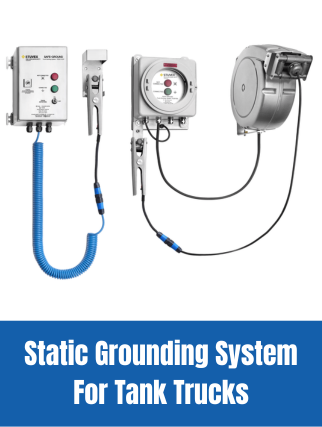 |
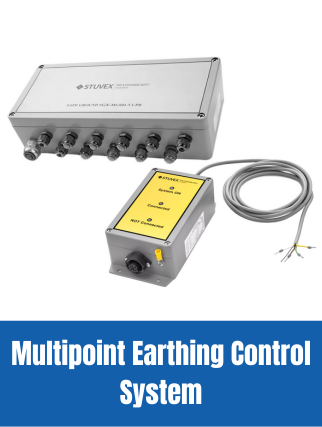 |
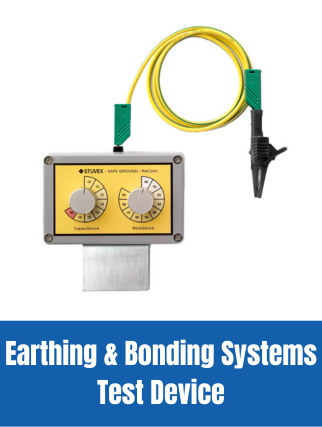 |
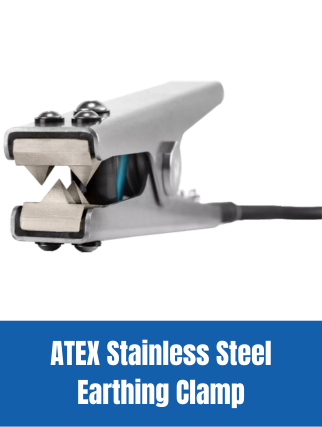 |
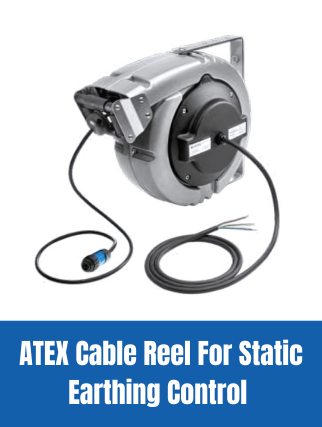 |
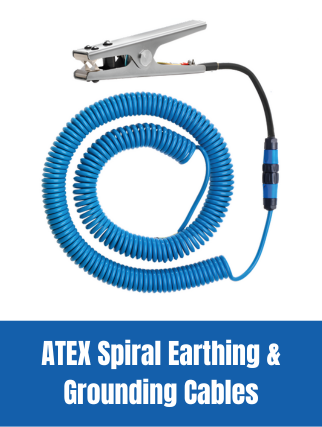 |

Experts In Equipment for Explosive Atmospheres with ATEX & IECEx Certification







